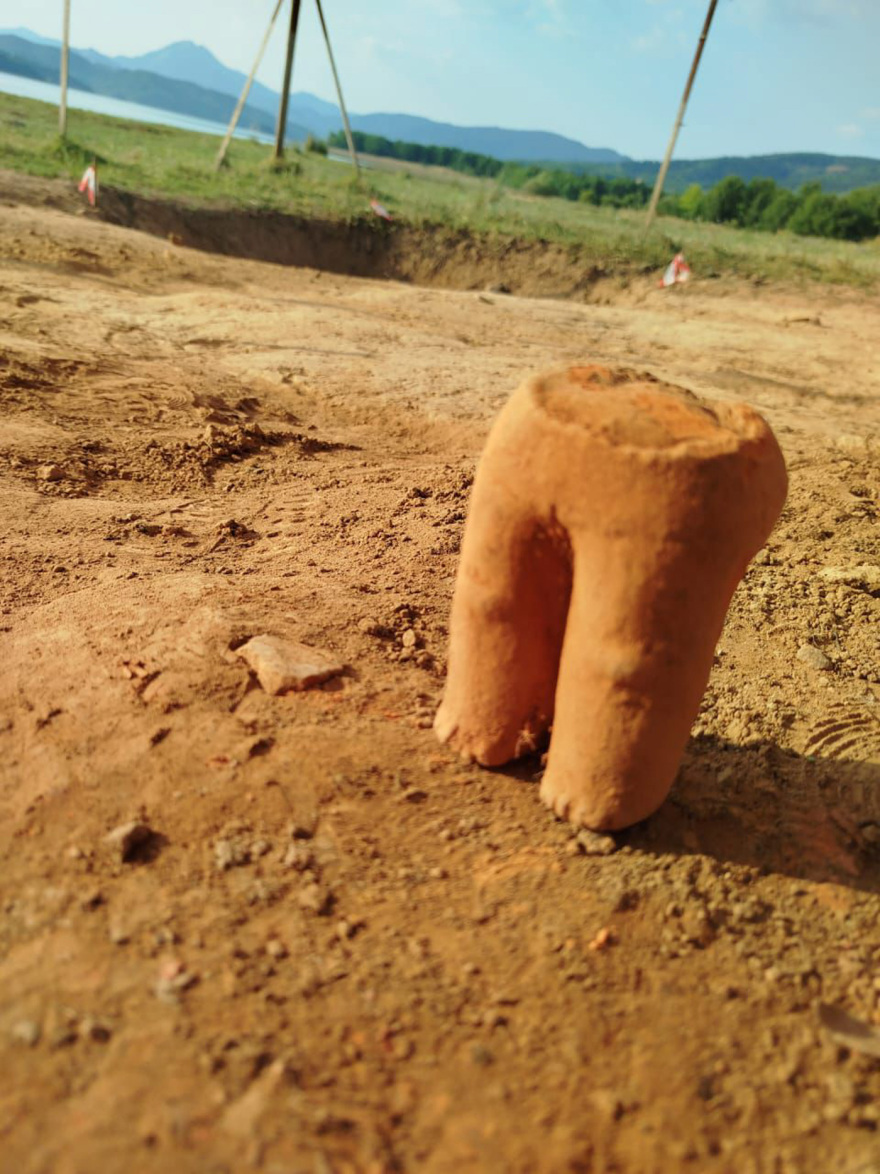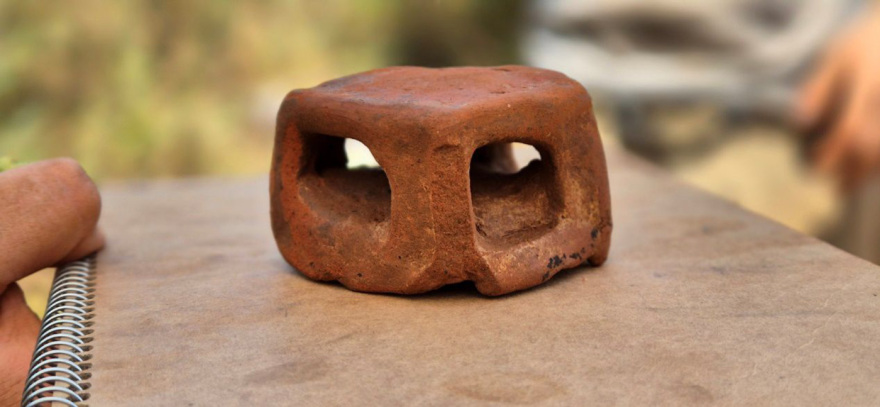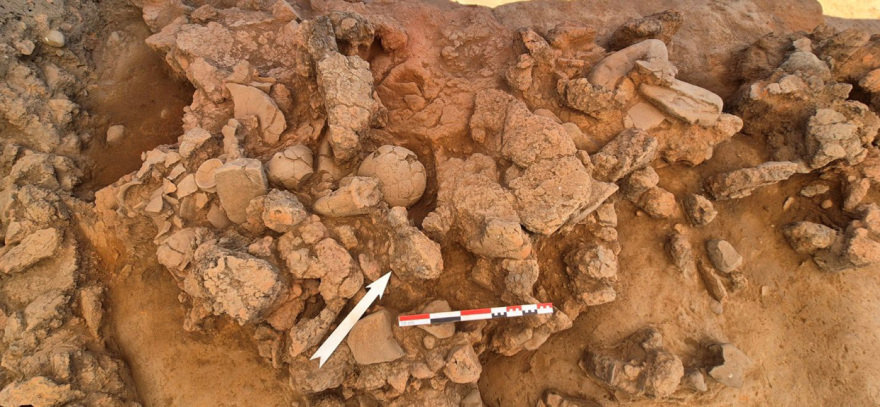According to the Ministry, this is considered a rare high-altitude Neolithic settlement, distinct from similar lowland sites. Due to its “originality” and the absence of similar mobile or permanent finds, it is regarded as a unique case, opening new fields in Neolithic research. This site, located on the western shores of Lake Plastira, recently concluded its third excavation season.
At an altitude of 800 meters, a Neolithic settlement has been identified. The main surface of the site’s use was found approximately 1 meter below the surface, dated to the transition between the end of the Early and the start of the Middle Neolithic (5999-5845 BC). The finds indicate that this was a self-sufficient site in terms of raw materials, such as clay for pottery and various types of flint. Numerous grinding tools and millstones made from sandstone, which is naturally present at the site, were also discovered.
The pottery is mostly monochromatic and made on-site, with two ceramic kiln complexes discovered so far. These contain mostly spherical vessels, likely in the process of firing. Based on the stratigraphy, more kilns are expected to be found. The presence of ceramic kilns at such an early period is a recent discovery from three other sites in Thessaly.


The discovery of these kilns suggests the autonomy of this mountainous site and possibly the more permanent nature of the settlement. Additionally, “custom-made” structures for various uses, possibly including an oven, have been found. A large area covered with burnt deposits is bordered by a brick-built wall, where hearths, postholes, and other mobile artifacts have been found.
Among the mobile artifacts are humanoid figurines, one of which has a rare preserved height of 10.5 cm, with an estimated original height of over 16-17 cm. Also notable is a complete model of a kiln or house, another rare find. Some decorative elements (knobs) on the pottery may indicate closer connections with specific mound sites of the same period in the Thessalian plain.


Ask me anything
Explore related questions





